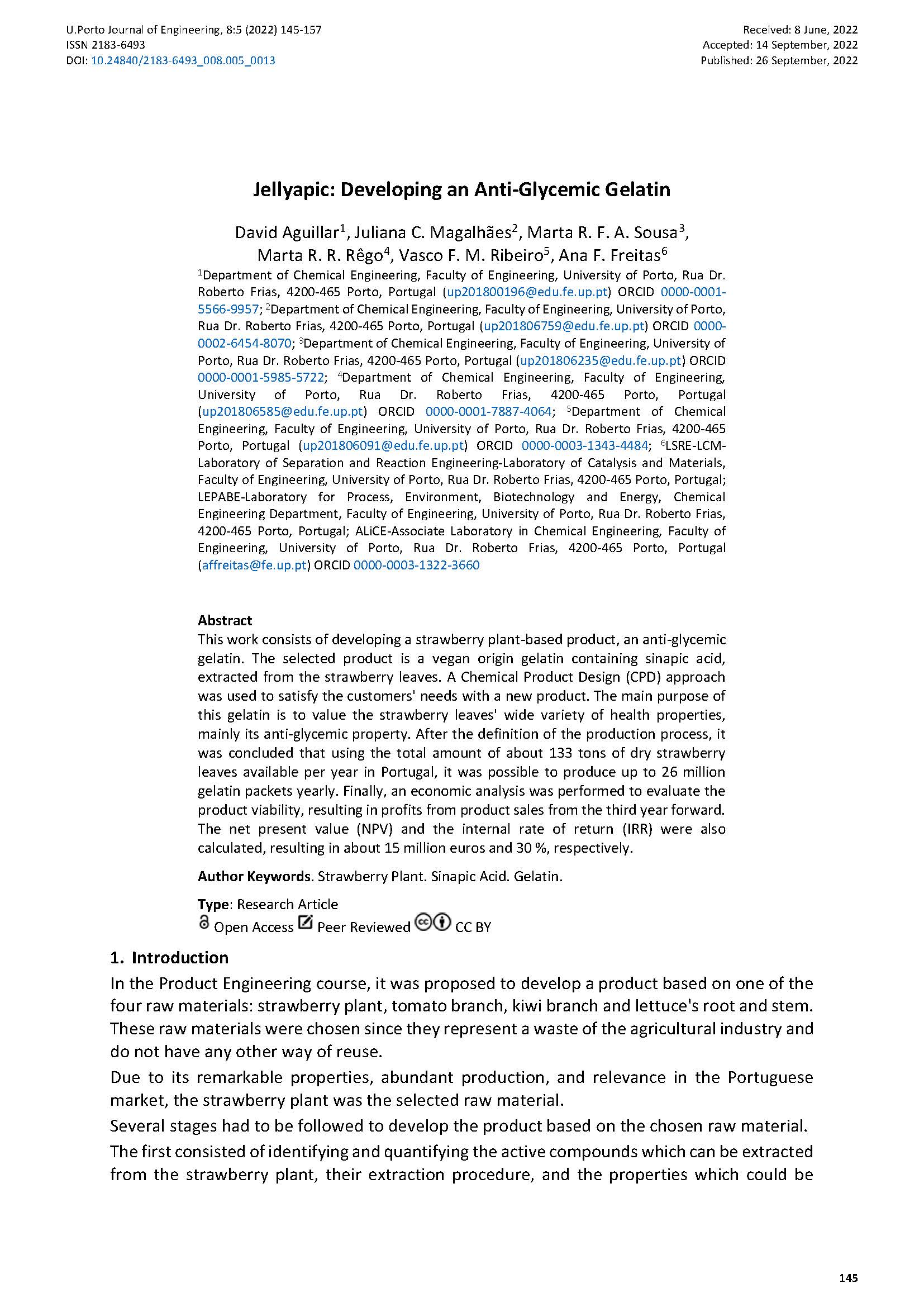Jellyapic Developing an Anti-Glycemic Gelatin
Main Article Content
Abstract
This work consists of developing a strawberry plant-based product, an anti-glycemic gelatin. The selected product is a vegan origin gelatin containing sinapic acid, extracted from the strawberry leaves. A Chemical Product Design (CPD) approach was used to satisfy the customers' needs with a new product. The main purpose of this gelatin is to value the strawberry leaves' wide variety of health properties, mainly its anti-glycemic property. After the definition of the production process, it was concluded that using the total amount of about 133 tons of dry strawberry leaves available per year in Portugal, it was possible to produce up to 26 million gelatin packets yearly. Finally, an economic analysis was performed to evaluate the product viability, resulting in profits from product sales from the third year forward. The net present value (NPV) and the internal rate of return (IRR) were also calculated, resulting in about 15 million euros and 30 %, respectively.
Downloads
Article Details

This work is licensed under a Creative Commons Attribution 4.0 International License.
Authors who publish with this journal agree to the following terms:
- Authors retain copyright and grant the journal right of first publication with the work simultaneously licensed under a Creative Commons Attribution License that allows others to share the work with an acknowledgement of the work's authorship and initial publication in this journal.
- Authors grant the journal the rights to provide the article in all forms and media so the article can be used on the latest technology even after publication and ensure its long-term preservation.
- Authors are able to enter into separate, additional contractual arrangements for the non-exclusive distribution of the journal's published version of the work (e.g., post it to an institutional repository or publish it in a book), with an acknowledgement of its initial publication in this journal.
- Authors are permitted and encouraged to post their work online (e.g., in institutional repositories or on their website) prior to and during the submission process, as it can lead to productive exchanges, as well as earlier and greater citation of published work (See The Effect of Open Access).

